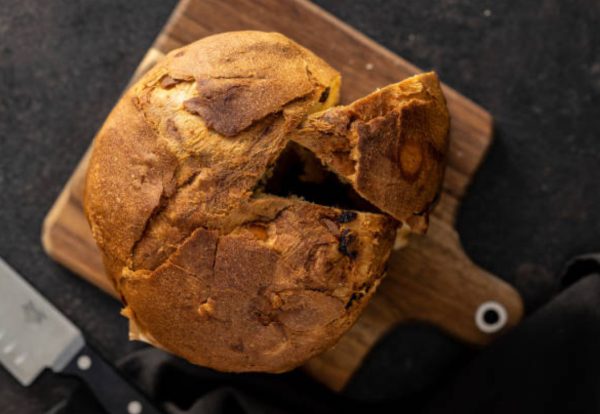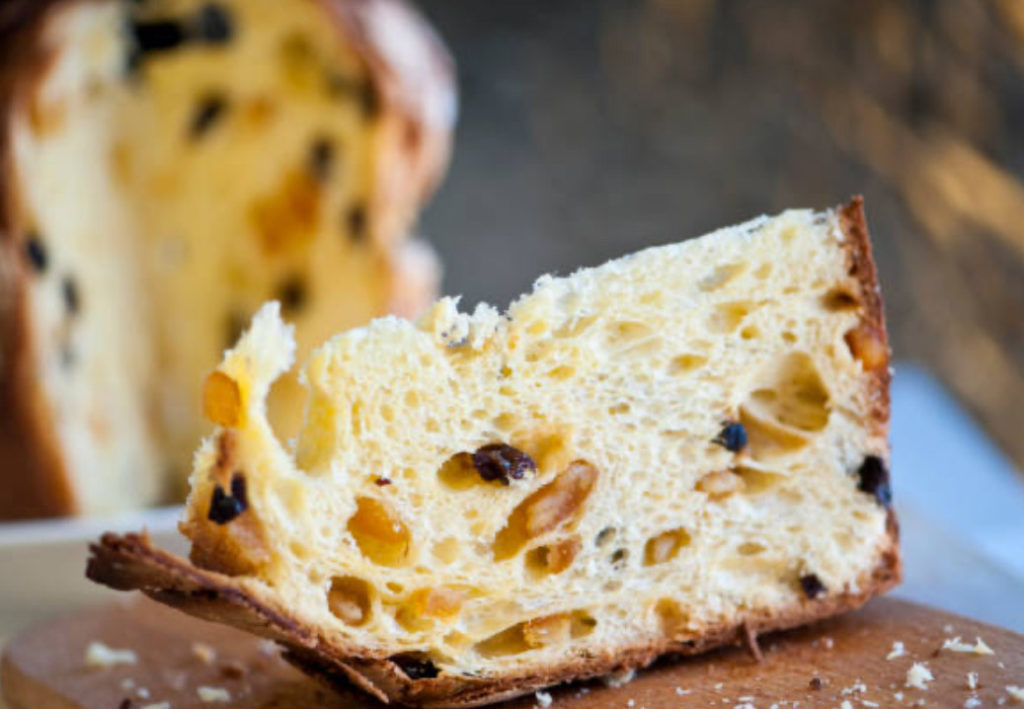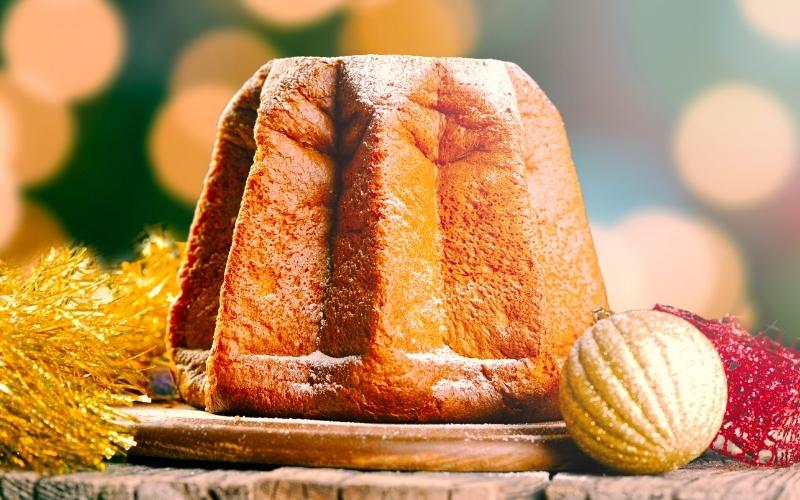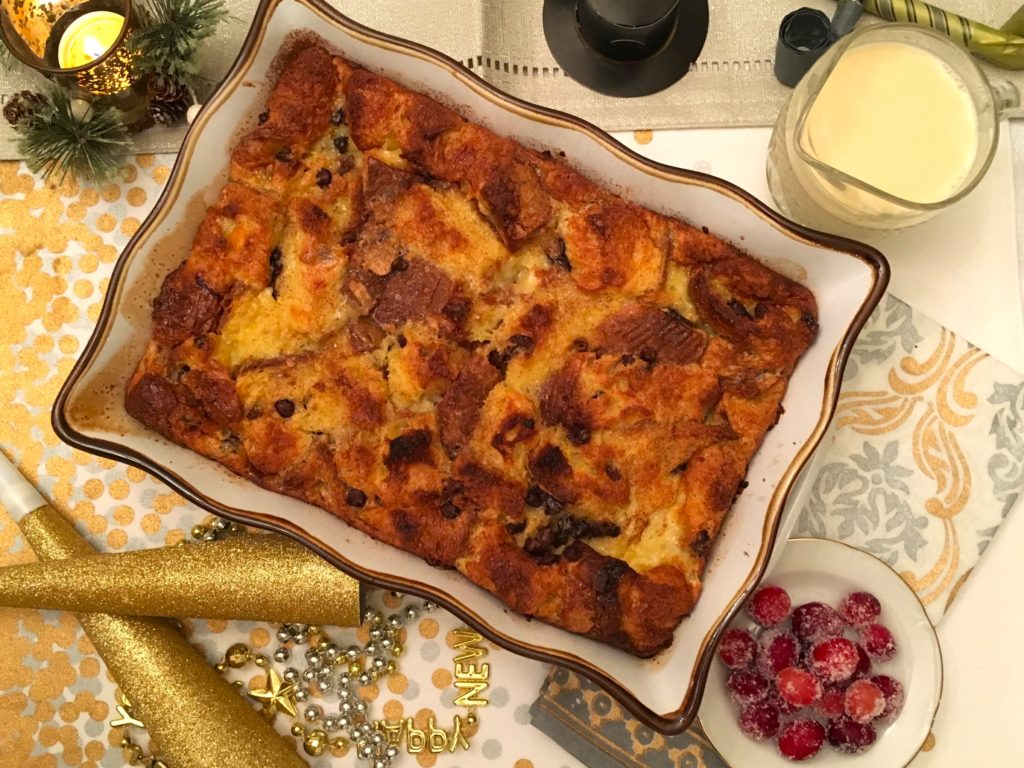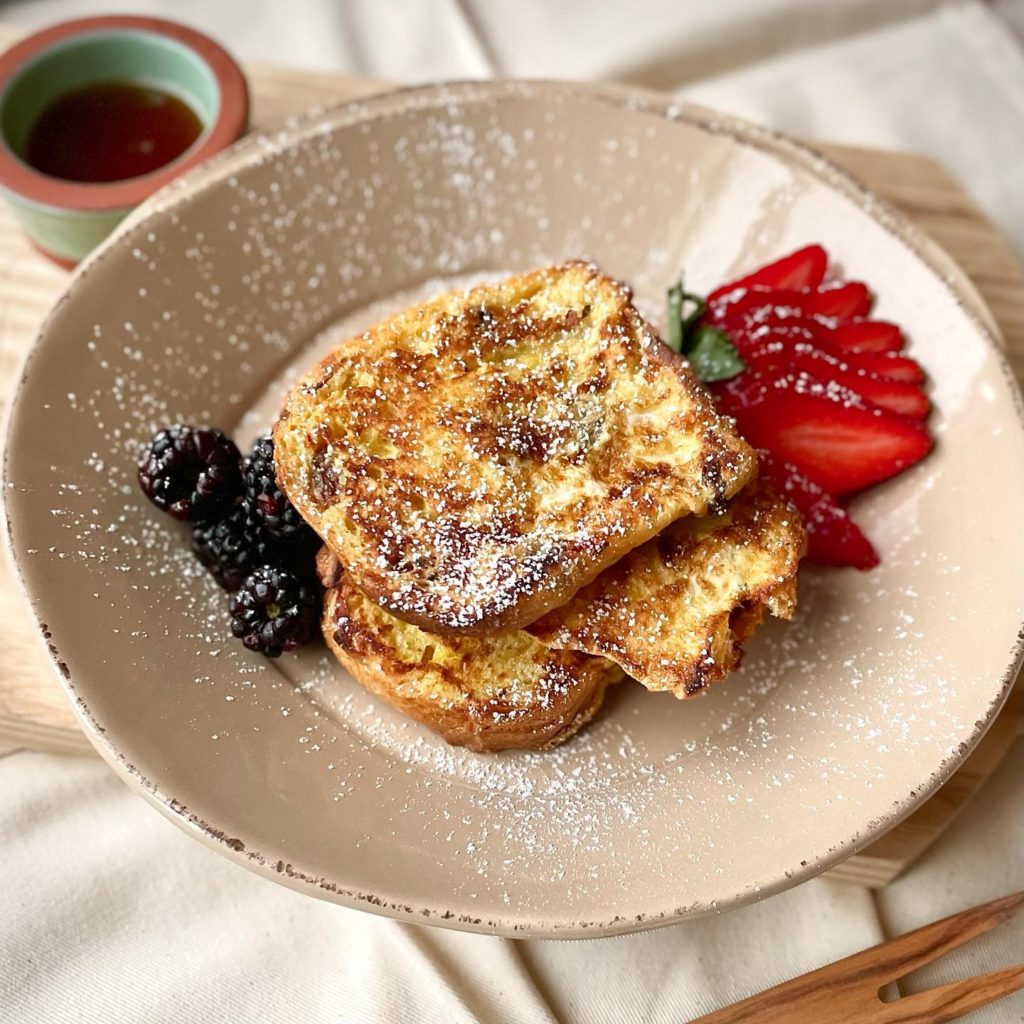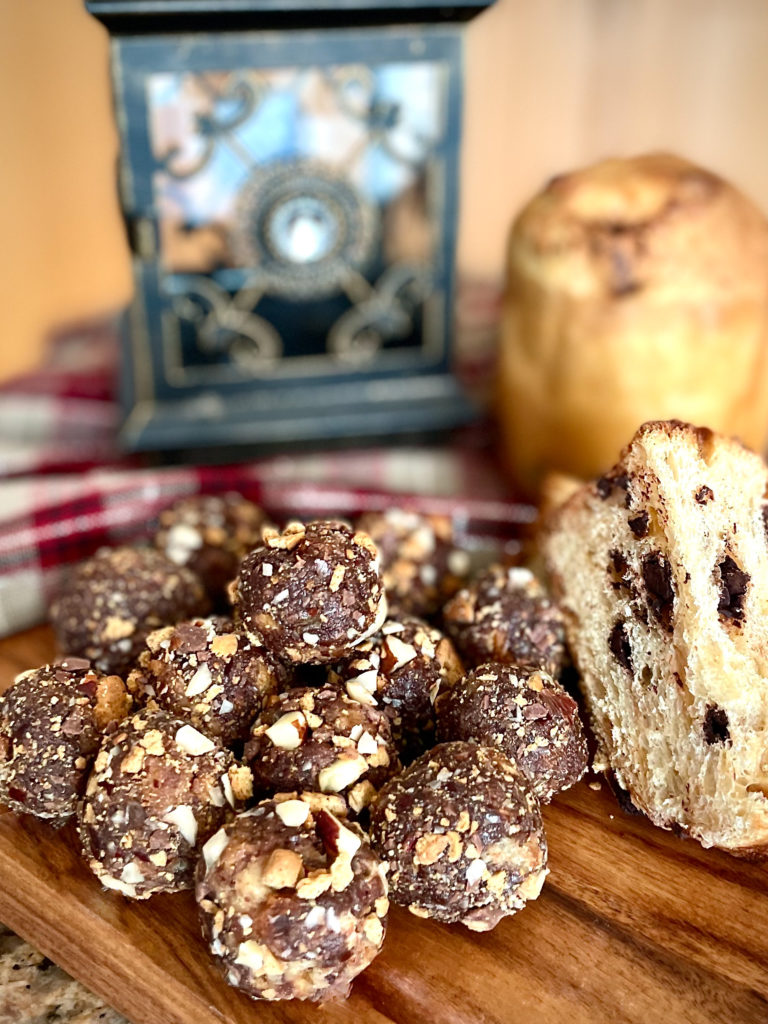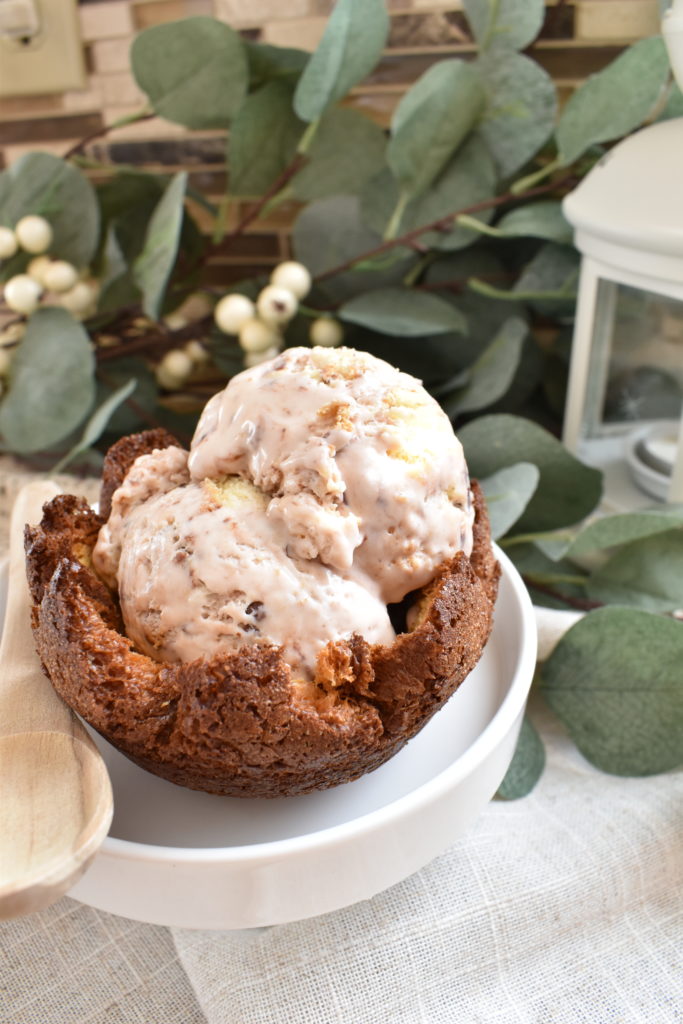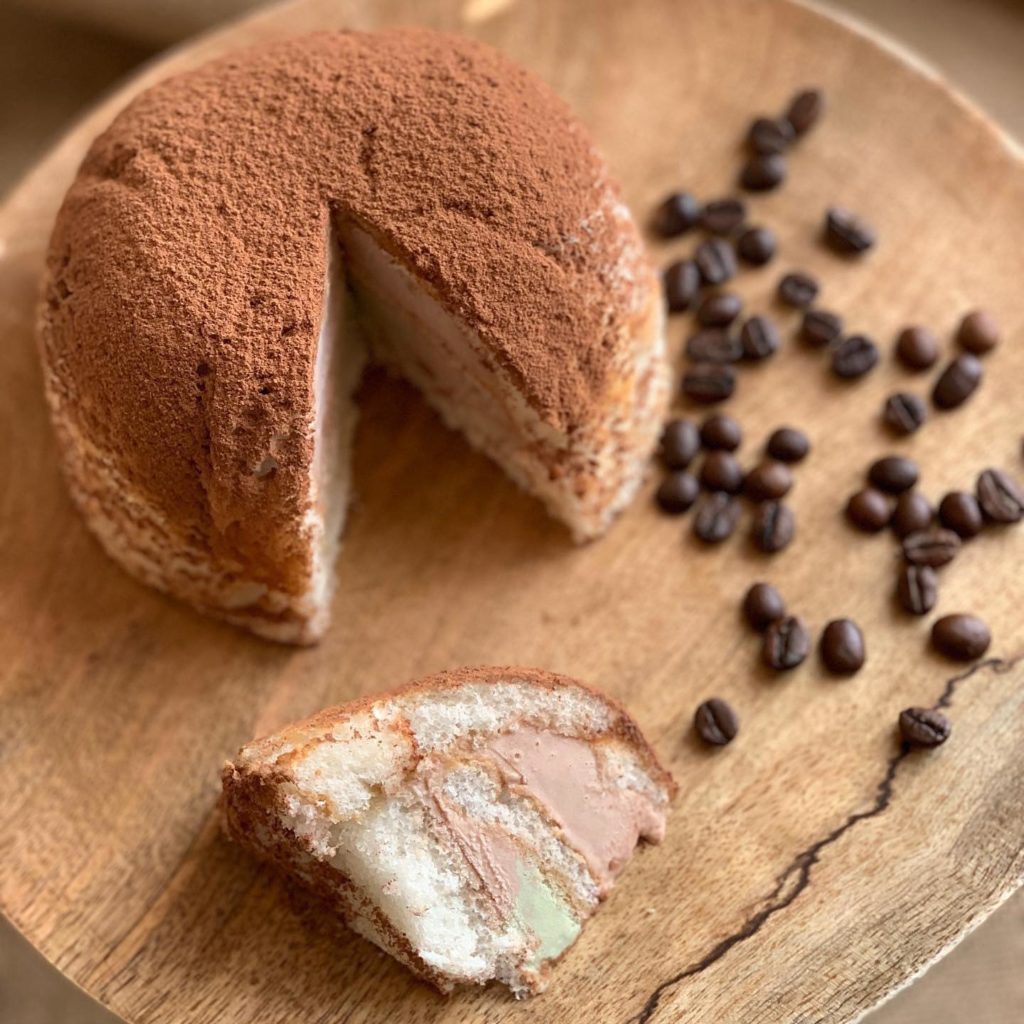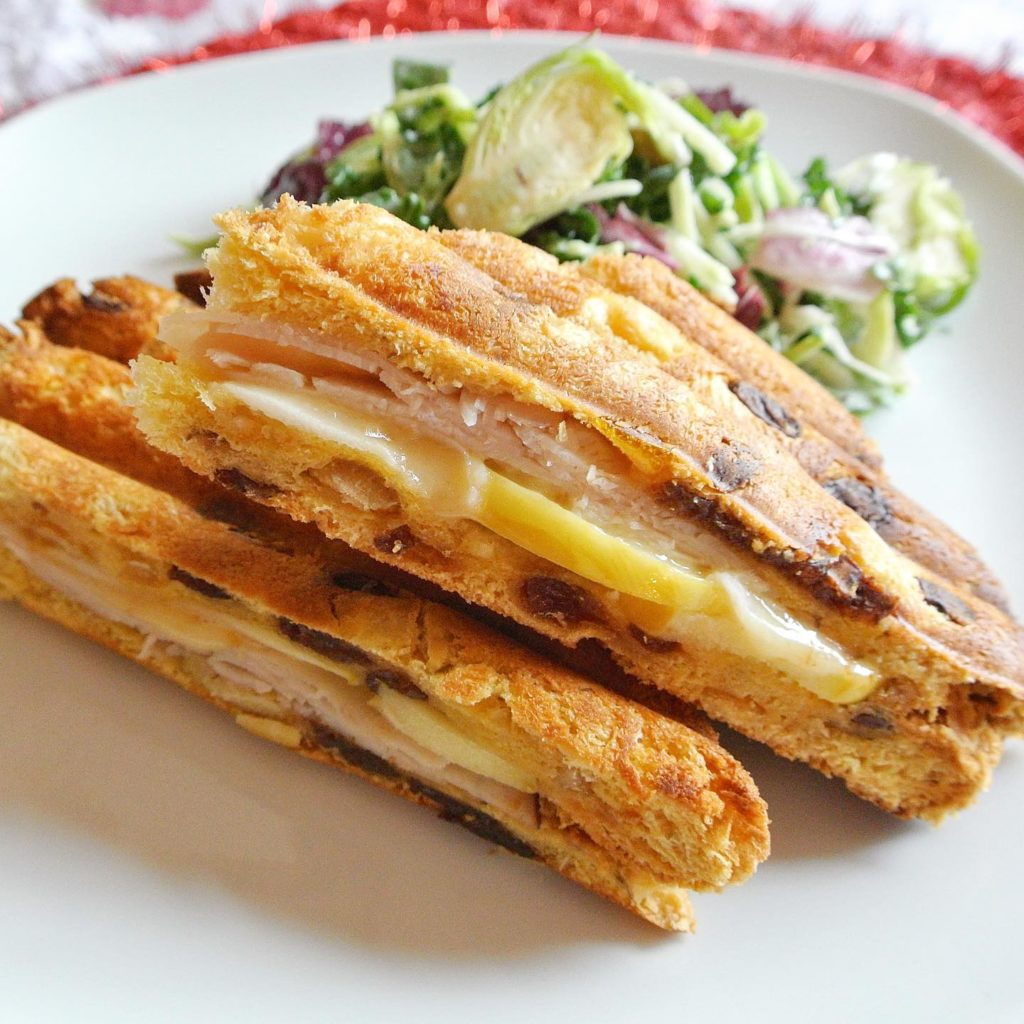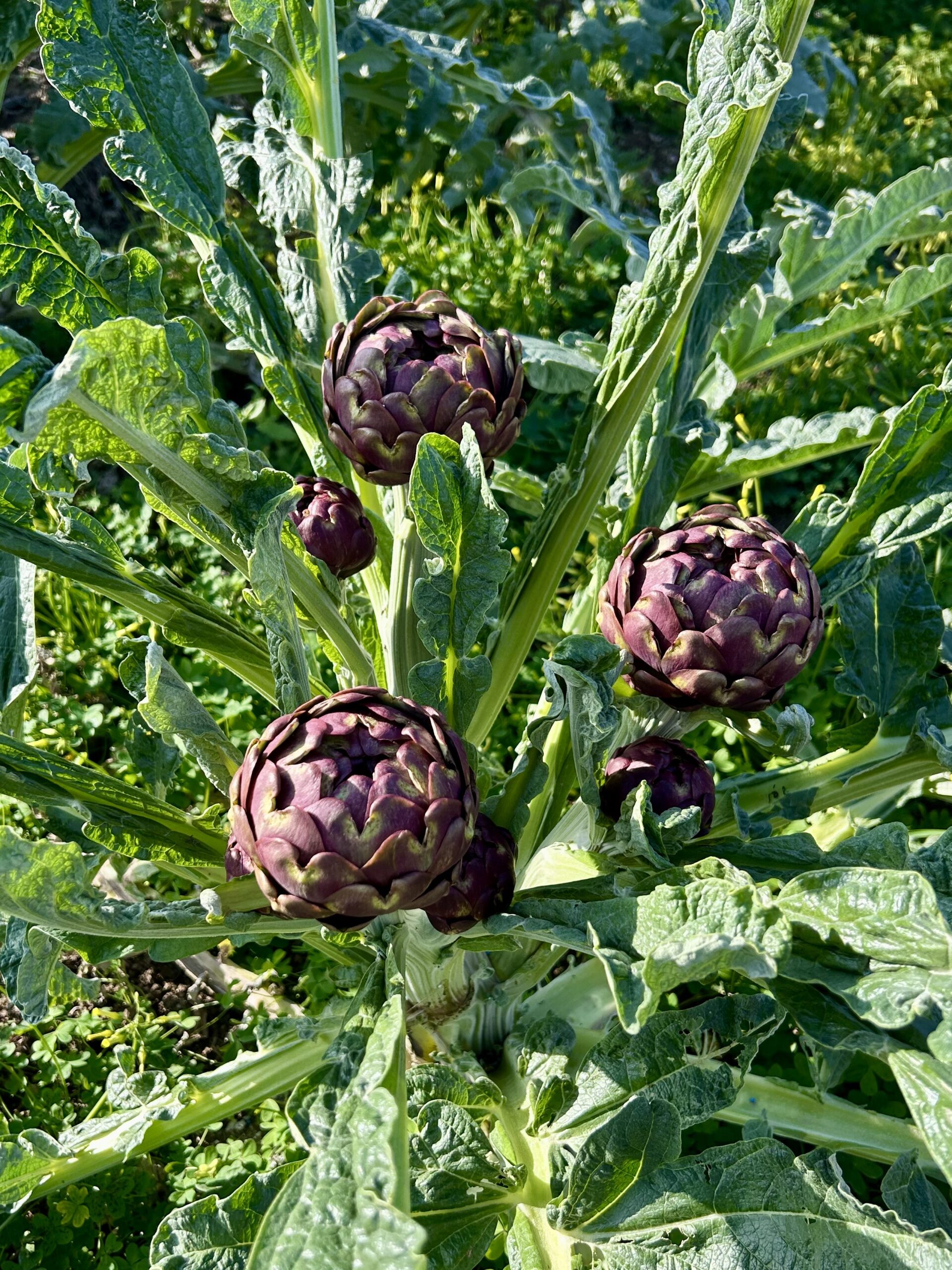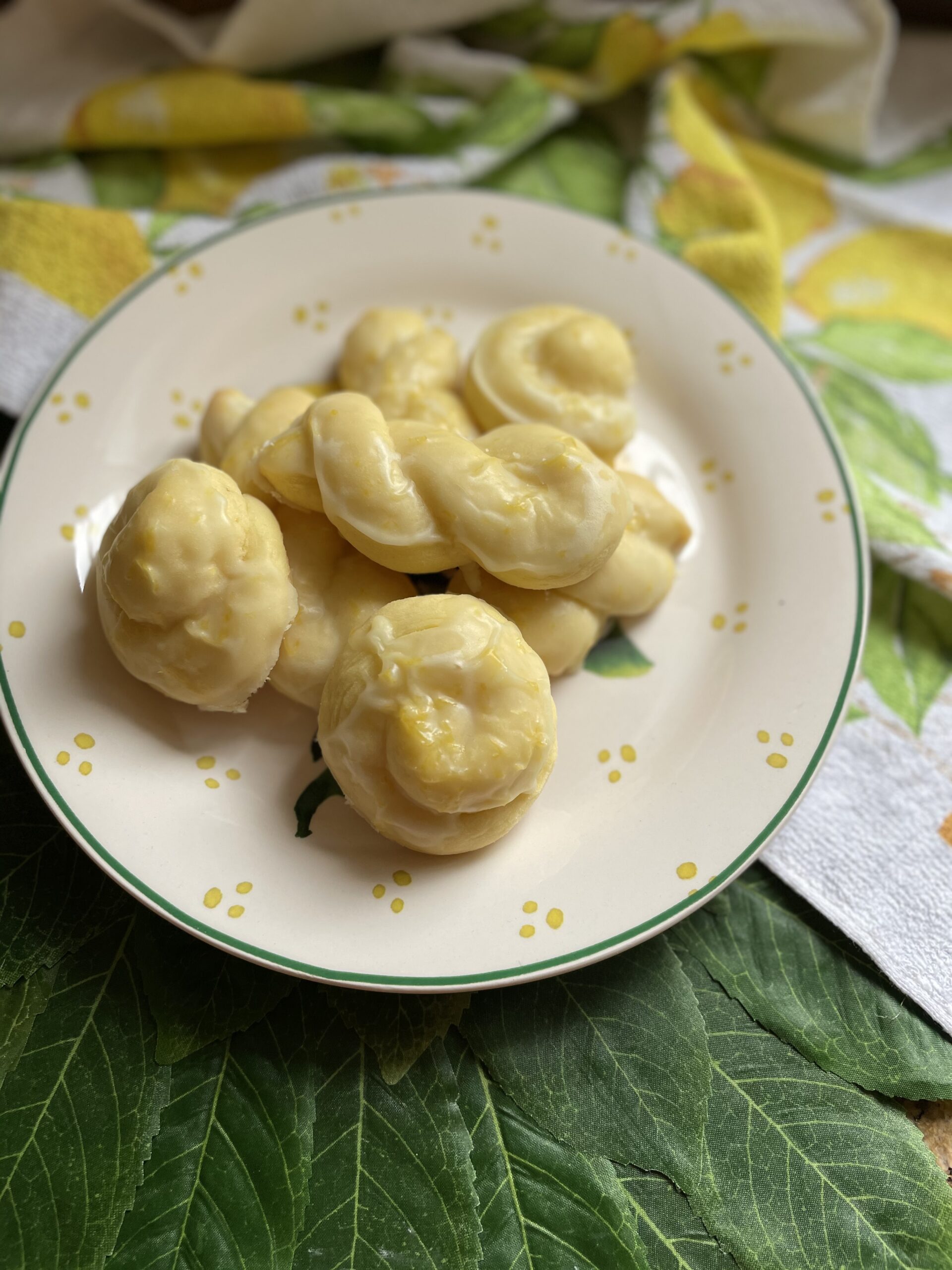The holiday season may seem like a distant memory, however like the ghost of Christmas past, remnants may still be found amidst the goods stocked in the kitchen cupboards. One such festive clinger, the Italian fruitcake known as, panettone. While a buttery slice makes a nice accompaniment to a cup of coffee or tea, a little creativity and reinvention can take the sweet loaf from the sidelines and turn it into the star of the show.
For those who may be unfamiliar with the sweet bread loaf, it is an Italian festive staple. Hailing from the northern city of Milan, its history is varied. Panettone which translates to “big bread” is made of a dough similar to sourdough that traditionally is sweetened with candied orange peel, raisins, and lemon zest (modern varieties have seen the dough dotted with chocolate chips, dried cranberries and even filled with flavored creams). It then undergoes a lengthy leavening and proofing process which gives the loaf its distinct and characteristic fluffiness. Prior to baking, the top of the panettone is marked with a cross (traditionally by the head of the household) as a good omen for the year ahead. Paired with an espresso or a sweet spumante, the dome shaped dessert is cut vertically and served in triangular slices. Care should be taken in serving it correctly for it is considered bad luck to remove the domed top and to consume it on your own.
Pandoro is the other typical Italian Christmas cake which is star-shaped and covered with confectioners’ sugar. Pandoro has a soft and compact dough, a smooth consistency, and a full and velvety taste.
Because gifting a panettone is affiliated with feelings of joy and love, that gift should in turn be shown some love at the end of the holiday season. With a little kitchen ingenuity that panettone and pandoro can be repurposed and served up in a myriad of ways.
Cubing it, drowning it in an egg and cream custard, and baking it off, transforms it into a luxurious bread pudding.
Along a similar vein, it can be cut into thick slices, dipped in an egg batter, and presented as a decadent brunch of French toast.
With a little coffee and mascarpone, a pandoro taking up shelf space in the pantry can be made over as tiramisu.
For a few more inventive reincarnations, chop up panettone or pandoro and combine it with chopped nuts and chocolate hazelnut spread then roll it into truffles.
What about adding those same chopped bits to the custard base for ice-cream and to really take it to the next level, use a slice of the dessert bread to make an edible bowl in which to enjoy your frosty treat. Cut and roll out a slice of panettone and form it over a pinch bowl or muffin tin then proceed to bake it until crisp.
You could also slice it and layer it in a bowl with gelato to form the Tuscan treat known as zuccotto.
With a name that translates to large loaf, I discovered that much like any other bread, panettone makes a great sandwich. The proof is in the press as it can be transformed into both sweet and savory panini. To make a sweet version, spread a generous smear of cream cheese, Nutella, and sour cherry jam between two pieces of the chocolate chip panettone. Once crisped in the sandwich press, give it a dusting of powdered sugar and serve with fresh berries.
For a savoury twist use traditional panettone Milanese (the one with raisins and candied orange peel) to make a tangy turkey Sammie. Layer with cranberry sauce or jam, roast turkey, and a melting cheese like Swiss or Brie for a truly unique pressed panino.
So, before you ship that panettone off to the office kitchenette or save it for next Christmas (come on we all know that’s been done) try giving it a mouthwatering metamorphosis. Buon Appetito!

